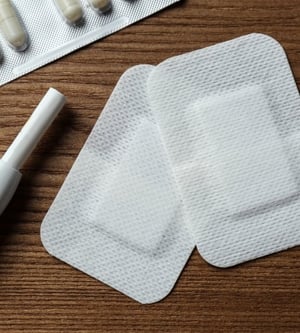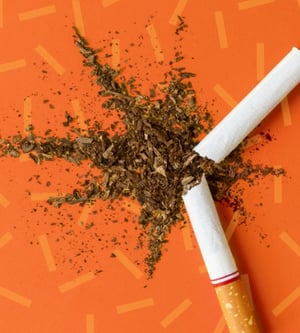
Smokeless Tobacco
USERS IN SOUTH DAKOTA
Did you know that smokeless tobacco use in South Dakota is higher than the national average? Smokeless tobacco is just as dangerous for your health as cigarettes and other tobacco products. The only way to protect yourself from these consequences is to kick the habit for good.
These smokeless tobacco products include:
- Plug
- Snuff
- Snus
- Spit
- Chew
- Chaw
- Pinch
- Dip
- Dissolvables
CONSIDER THE RISKS
Take a look at what makes smokeless tobacco so dangerous. It's not harmless!
ORAL HEALTH RISKS
The Oral Cancer Foundation estimates that of nearly 54,000 Americans to get oral oropharyngeal cancer this year, 9,750 will die. That adds up to one person every hour.
Other oral health problems caused by smokeless tobacco:
- Irritated or receding gums
- High blood pressure
- Cracked or bleeding lips
- Excessive spitting
- Red or white patches in the mouth
APPEAL OF VARIETY & FLAVORS
Unlike cigarettes, tobacco companies can add sweeteners and flavors to smokeless tobacco products, making it seem more appealing to young people. These companies regularly come out with new varieties of their products with increased health risks.
ADDICTION
Since it contains nicotine, users are still exposed to the harms of nicotine addiction. Users often partake in the product constantly, making them highly dependent on the drug.
Did you know?
Dipping 8-10 times a day exposes the user to as much nicotine as smoking 30-40 cigarettes. That's more than two to three times the amount of nicotine.
TARGETING RURAL POPULATIONS
- Young men
- Native Americans
- Farmers and ranchers
- Rodeo/cowboys (men and women)


SD Quitline
People who use a Quit Coach are 2x more likely to quit and stay QUIT!

Quit & Stay Quit
Everybody quits differently. Your quit journey is your own, and only you know what works for you. Find the method that fits into your journey to put out that cigarette, shut off the vape pen or close the tin for the last time. Start your quit journey today, and get back to your life!
Read More
Phone Coaching
Get help from a Quitline phone coach. Your coach will be there for you every step of the way.
Get Started
Kickstart Kit
Kick the habit with the FREE Kickstart Kit, which ships to your door with cessation medication and the Quit Guide.
Get Your Kit
Quit Guide
Skip the coaching and medication for now. Start your journey with the FREE Quit Guide to quit when you are ready.
Get the Guide



